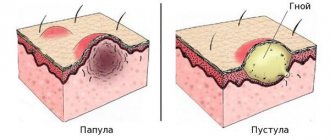Sarcomas are a heterogeneous group of malignant neoplasms that grow from connective tissue, which is different from cancers, which are malignant tumors that develop from epithelial tissues. Soft tissue sarcomas can arise from any extraskeletal nonepithelial tissue except glia and tissues of the reticuloendothelial system. They most often have an aggressive course and are prone to recurrence, even after radical treatment.
Soft tissue sarcoma is a rare pathology. In Russia, the incidence in 2022 was 1.75 per 100,000 people. Most often, these neoplasms affect the lower extremities; this localization accounts for about 40% of cases. Sarcomas of internal organs are rare and are localized in the kidneys, heart, uterus and prostate. Breast sarcoma is considered separately, in which the average age of patients is about 50 years.
- Classification of soft tissue sarcomas
- Etiology and pathogenesis of soft tissue sarcomas
- Clinical symptoms of soft tissue sarcoma
- Diagnosis of sarcoma
- General principles of treatment of soft tissue sarcomas
How does sarcoma develop?
Is sarcoma cancer?
Official medicine in Russia and some other countries refers to cancer as malignant tumors that develop in epithelial cells contained in the skin or mucous membranes and lining the inner surface of organs. Sarcomas are not tied to specific organs, they form in different types of tissues, but behave in a similar way - they grow quickly, damage healthy cells and metastasize. Metastasis is an additional focus of cancer - a new tumor in an organ located far from the main tumor, including in lungs, bones and liver.
The disease begins with the appearance of just one mutated or altered cell. It becomes this way under the influence of radiation, various chemicals, diseases or hereditary characteristics, and gradually multiplies, creating copies of itself. Over time, they become more and more numerous, they turn into a tumor and destroy surrounding tissues. In addition, they have a special, very dangerous property - they know how to move around the body using the circulatory and lymphatic systems. The lymphatic system complements the cardiovascular system. The lymph circulating in it - the intercellular fluid - washes all the cells of the body and delivers the necessary substances to them, taking waste from them. In the lymph nodes, which act as “filters,” dangerous substances are neutralized and removed from the body, become established in other areas of the body and create additional tumors.
Types of soft tissue sarcomas
Doctors know of more than 50 different types of such tumors, the most common of which are:
- Fibrosarcomas
affecting the connective tissue of the legs, arms or torso. They most often occur in people between 20 and 60 years of age, but can even occur in infants. - Angiosarcomas
are hemangiosarcomas that begin in blood vessels, or lymphangiosarcomas that begin in lymphatic vessels. They appear, among other things, in those parts of the body that have been exposed to radiation therapy, in the chest area and in the extremities with lymphedema - an accumulation of lymphatic fluid in the tissues. Lymph is an intercellular fluid that washes all the cells of the body and delivers necessary substances to them, taking away waste . due to disruption of its outflow. - Leiomyosarcoma -
originating in smooth muscle, is often found in the abdominal cavity, but can also be found in other parts of the body, such as the extremities or the uterus. - Synovial
- Forms in the tissues surrounding the joint, usually in the hip, knee, ankle and shoulder. - fibromyxoid
sarcomas are slow-growing tumors usually found in young and middle-aged patients. - Kaposi's sarcoma -
develops in the cells lining lymphatic or blood vessels. - Alveolar cancer
is a rare type of oncology, mainly affecting young patients. - Neurofibrosarcomas, malignant schwannomas and neurogenic sarcomas
arise in cells surrounding the nerve. - Liposarcomas are
tumors of adipose tissue that most often form in people aged 50 to 65 years. - Clear cell -
usually develops in the tendons of the arms or legs. - Rhabdomyosarcomas
are the most common type of soft tissue sarcoma in children. - Epithelioid
- usually damage the tissue of the hands, forearms, feet or legs of adolescents and young patients.
Gastrointestinal stromal tumors- Low-grade myxofibrosarcomas are most often found on the extremities of older people.
- Malignant mesenchymomas -
have features of fibrosarcoma and at least two other types of sarcomas.
Reasons for the development of sarcoma
Doctors do not know the exact causes of such tumors - modern medicine only knows about factors that increase the likelihood of this event.
Radiation
, used to combat various types of oncology. Sarcomas can occur in parts of the body that have been exposed to radiation therapy. On average, about 10 years pass from the time it is carried out until the disease is detected. Treatment methods have been improved over several decades, and much more is known about choosing the right doses than before. Modern knowledge is helping to reduce the number of new diagnoses, but even today radiation is only used when its benefits outweigh the risks.
Heredity
. Some disorders caused by changes in genes are often inherited from parents and are associated with an increased likelihood of developing soft tissue sarcomas. These include:
- Gardner's syndrome
, leading to the appearance of a large number of polyps - growths of intestinal tissue; - neurofibromatosis
, which causes the formation of multiple nerve tumors; - Li-Fraumeni syndrome
, which increases the risk of breast cancer, brain tumors, sarcomas and leukemia - changes in bone marrow and blood cells; - retinoblastoma
is a life-threatening eye tumor that develops mainly in children; - Werner's syndrome
is a genetic disease, the owners of which age prematurely, suffer from cataracts - clouding of the lens, blockage of the heart arteries and other health problems; - tuberous sclerosis
, which causes seizures and a variety of tumors in various tissues and organs, including the brain, eyes, skin, heart, kidneys, liver, lungs and gastrointestinal tract; - Gorlin syndrome
, which increases the likelihood of developing many types of skin cancer, fibrosarcomasFibrosarcomas affect the connective tissue of the legs, arms or torso. They most often occur in people between 20 and 60 years of age, but can even occur in infants. and rhabdomyosarcomasRhabdomyosarcomas are the most common type of soft tissue sarcoma in children.
Chemicals
, such as arsenic and vinyl chloride, used in the production of plastics, increase the risk of liver sarcoma.
Damage to the lymphatic system
. Lymph is a clear liquid containing cells of the immune system, which are transported throughout the body through blood vessels and lymph nodes, which act as “filters” that retain and neutralize dangerous substances. If these important organs are damaged or after their removal, a person may develop lymphedema - accumulation of lymph and swelling, as well as its complication - lymphangiosarcoma. Lymphangiosarcoma is a life-threatening tumor that develops in the lymphatic vessels.
Injuries, lifestyle and bad habits, including smoking, poor diet and lack of exercise, do not increase the likelihood of developing sarcoma.
Incidence of Ewing's sarcoma
Among malignant tumors in children, Ewing's sarcoma accounts for 1.8% and is the second most common among malignant bone tumors in children (10-15%).
Every year in the United States, this tumor is diagnosed in 150 children and adolescents. Males are more often affected by the disease.
There is some connection between the occurrence of Ewing's sarcoma and the presence of abnormalities of the skeleton and genitourinary system.
In 30% of cases, at the time of diagnosis there is already metastatic damage to the lungs and bones.
Signs and symptoms of soft tissue sarcoma
About half of them occur in the arms or legs. Most people notice a swelling that gradually enlarges over weeks or months without always being painful.
About 4 out of 10 sarcomas develop in the abdominal cavity - the abdomen, which causes not only discomfort, but also blockage of the digestive tract or bleeding from the stomach and intestines. In addition, they can put pressure on nerves, blood vessels and nearby organs, and can grow to very large sizes.
In rare cases, tumors appear in the chest, head or neck.
Possible signs of the disease include:
- the appearance of a new swelling or lump in any area of the body and the growth of existing ones;
- increasing abdominal pain;
- blood in the stool or vomit, as this may be caused by damage to the digestive tract from a growing tumor;
- black, tarry stools that acquire a similar color and consistency due to bleeding in the stomach or intestines.
Most often, the above symptoms are not caused by sarcomas, but if they appear, you should immediately consult a doctor.
What are the symptoms of the disease?
The most common symptom that appears due to Ewing's sarcoma is pain and swelling in the area where the tumor grows.
Pain appears spontaneously. Usually the pain starts when the child does something with physical activity. But often these pains do not completely go away at night. The more the tumor grows, then in addition to pain, the child begins to see swelling, or if the swelling is not yet visible, it can already be felt. Sometimes this area of tumor growth may be red. And the part of the body itself stops working normally. Often, doctors initially mistake these symptoms for growing pains, bone inflammation, or the result of some kind of sports injury.
But since Ewing's sarcomas can grow in almost any bone and soft tissue, other symptoms may vary greatly in each individual case. For example, if a tumor grows in the area of the spine or peripheral nerves [peripheral nervous system], then the child may first develop abnormalities such as loss of motor ability (paralysis). If a tumor grows in the pelvic bones, or in the chest area, or in the thigh bones, then for a very long time it does not give any obvious symptoms and remains unnoticed.
In about a third of sick children who develop general symptoms such as fever, sickness, general tiredness and fatigue, they begin to lose weight, the disease may already be at an advanced stage. From the moment a child has the first symptoms to the time he is given an accurate diagnosis, it can take from several weeks to several months.
The symptoms in children and adolescents that we write about here do not necessarily indicate that the child has Ewing's sarcoma or some other bone cancer. However, if a child or teenager experiences bone pain, we definitely recommend contacting an experienced pediatrician and performing a full diagnosis. To be absolutely sure that it is not cancer.
Diagnosis of soft tissue sarcoma
Detailed information about the disease and the general state of a person’s health allows us to choose the most appropriate treatment for each individual patient.
Highly qualified oncology specialists carry out a complete diagnosis of soft tissue sarcomas using the most modern equipment - quickly, efficiently, without queues and loss of time.
The examination begins with a general examination and a survey about symptoms and family diseases, after which the doctor prescribes a series of tests.
The first of these may be conventional radiography.
. With its help, immediately after diagnosis, doctors can see whether the tumor has spread to the lungs.
– computed tomography: X-rays create detailed images of internal organs and tissues. The method is used to detect tumors in the chest or abdominal cavity, as well as to detect damage to the lungs, liver and other organs.
MRI
– Magnetic resonance imaging: radio waves and strong magnets often work better than CT scans. MRI can provide information about the size of the sarcoma, its location, and sometimes even the type of tissue it consists of. In addition, this study is prescribed to study the condition of the brain and spinal cord.
Ultrasound
Using ultrasound waves, a specialist can distinguish seals from ordinary cysts - fluid-filled sacs.
PAT
– positron emission tomography: before performing this study, the patient receives radioactive sugar, which accumulates in dangerous tumors. A scan is then performed to show whether changes in the tissue are cancerous.
If a soft tissue sarcoma is suspected, the doctor prescribes a biopsy
, during which a small piece of the tumor is removed and sent to a laboratory where its cells are carefully studied.
Basic diagnostic methods
First of all, you need to see a therapist. The doctor conducts a visual examination and, if necessary, sends you for additional examination to an oncologist, endocrinologist or other specialists. To make an accurate diagnosis, the following examination is indicated:
- blood test - general, biochemical;
- urine test - general;
- x-ray of affected areas and joints;
- Ultrasound of the affected areas, as well as lymph nodes and the abdominal cavity;
- MRI;
- scintigraphy (special examination of bones);
- biopsy - collection of biological tissue directly from the site of the lesion for further analysis.
Stages of soft tissue sarcoma
Immediately after the disease is detected, doctors try to stage it - to understand how far it has spread throughout the body and damaged tissue. This information allows us to understand the patient’s approximate prognosis and select the most appropriate treatment methods for him.
Staging of soft tissue sarcomas is carried out according to the international TNM
, each letter of which has its own meaning:
- " T
" describes the size of the underlying neoplasm; - “ N
” – damage to nearby lymph nodes; - “ M
” - the presence of metastases - additional foci of the disease in other areas of the body.
Using " G"
"indicate:
- The degree of difference between tumor cells
and healthy ones is from 1 to 3. One is assigned to cells that are most similar to normal tissues, and 3 is assigned to highly altered cells; - The number of dividing cells
is from 1 to 3. The fewer there are, the lower the score. - Necrosis
: a score from 0 to 2 is given to determine the amount of dying tissue - the higher the number, the more there is.
Then the total number of points is calculated: G1 – from 2 to 3; G2 – from 4 to 5; G3 – from 6 to 8.
Stages:
1A
: the size of the sarcoma does not exceed 10 centimeters, the remaining tissues are healthy.
1B
: the tumor may be larger than 15cm, but its cells are very similar to normal, and other organs are not affected.
2
: the tumor is no more than 5cm in diameter, but is graded G2 or G3.
3A
: sarcoma from 5 to 10 cm, G2 or G3.
3B
: 10 to 15 cm, G2 or G3, but other tissues are healthy.
Or, if the tumor is located in the abdomen, any size of the main lesion and damage to the nearest lymph nodes. 4
: a tumor of any diameter and type G, which has damaged not only nearby lymph nodes, but also distant tissues, such as the lungs.
Bibliography:
- Kaatsch P, Spix C: German Childhood Cancer Registry - Jahresbericht / Annual Report 2015 (1980-2014). Institut für Medizinische Biometrie, Epidemiologie und Informatik (IMBEI), Universitätsmedizin der Johannes Gutenberg-Universität Mainz 2015 [URI: https://www.kinderkrebsregister.de/dkkr/ergebnisse/jahresbericht/jahresbericht-2015.html] KAA2015a
- Dirksen U, Jürgens H: Ewing-Sarkome des Kindes- und Jugendalters. D IR2014
- Haeusler J, Ranft A, Boelling T, Gosheger G, Braun-Munzinger G, Vieth V, Burdach S, van den Berg H, Jürgens H, Dirksen U: The value of local treatment in patients with primary, disseminated, multifocal Ewing sarcoma ( PDMES). Cancer 2010, 116: 443 [PMID: 19924786] HAE2010
- Burkhardt B, Reiter A, Landmann E, Lang P, Lassay L, Dickerhoff R, Lakomek M, Henze G, von Stackelberg A: Poor outcome for children and adolescents with progressive disease or relapse of lymphoblastic lymphoma: a report from the Berlin-Frankfurt -muenster group. Journal of clinical oncology 2009, 27: 3363 [PMID: 19433688] BUR2009
- Germeshausen M, Skokowa J, Ballmaier M, Zeidler C, Welte K: G-CSF receptor mutations in patients with congenital neutropenia. Current opinion in hematology 2008, 15: 332 [PMID: 18536571] GER2007
- Gerth HU, Juergens KU, Dirksen U, Gerss J, Schober O, Franzius C: Significant benefit of multimodal imaging: PET/CT compared with PET alone in staging and follow-up of patients with Ewing tumors. Journal of nuclear medicine : official publication, Society of Nuclear Medicine 2007, 48: 1932 [PMID: 18006618] GER2007
- Wagner LM, McAllister N, Goldsby RE, Rausen AR, McNall-Knapp RY, McCarville MB, Albritton K: Temozolomide and intravenous irinotecan for the treatment of advanced Ewing sarcoma. Pediatric blood & cancer 2007, 48: 132 [PMID: 16317751] WAG2007
- Hunold A, Weddeling N, Paulussen M, Ranft A, Liebscher C, Jürgens H: Topotecan and cyclophosphamide in patients with refractory or relapsed Ewing tumors. Pediatric blood & cancer 2006, 47: 795 [PMID: 16411206] HUN2006
- Bernstein M, Kovar H, Paulussen M, Randall RL, Schuck A, Teot LA, Jürgens H: Ewing's sarcoma family of tumors: current management. The oncologist 2006, 11: 503 [PMID: 16720851] BER2006
- Juergens C, Weston C, Lewis I, Whelan J, Paulussen M, Oberlin O, Michon J, Zoubek A, Jürgens H, Craft A: Safety assessment of intensive induction with vincristine, ifosfamide, doxorubicin, and etoposide (VIDE) in the treatment of Ewing tumors in the EURO-EWING 99 clinical trial. Pediatric blood & cancer 2006, 47: 22 [PMID: 16572419] JüR2006
- Hawkins DS, Schuetze SM, Butrynski JE, Rajendran JG, Vernon CB, Conrad EU 3rd, Eary JF: [18F]Fluorodeoxyglucose positron emission tomography predicts outcome for Ewing sarcoma family of tumors. Journal of clinical oncology : official journal of the American Society of Clinical Oncology 2005, 23: 8828 [PMID: 16314643] HAW2005
- Dirksen U, Poremba C, Schuck A: Knochentumoren des Kindes-und Jugendalters. Der Onkologe 2005, 10: 1034 DIR2005
- Niemeyer C, Kontny U: Tumoren der Ewing-Sarkom-Familie, in: Gutjahr P (Hrsg.): Krebs bei Kindern und Jugendlichen. Deutscher Ärzte-Verlag Köln 5. Aufl. 2004, 491 [ISBN: 3769104285] NIE2004
- Schuck A, Ahrens S, Paulussen M, Kuhlen M, Konemann S, Rube C, Winkelmann W, Kotz R, Dunst J, Willich N, Jürgens H: Local therapy in localized Ewing tumors: results of 1058 patients treated in the CESS 81, CESS 86, and EICESS 92 trials. Int J Radiat Oncol Biol Phys 2003, 55: 168 [PMID: 12504050] SCH2003g
- Paulussen M, Frohlich B, Jürgens H: Ewing tumor: Incidence, prognosis and treatment options. Paediatr Drugs 2001, 3: 899 [PMID: 11772151] PAU2001c
Ewing's sarcoma: brief information (336KB) author: Dipl.-Biol. Maria Yiallouros, PD Dr. med. Gesche Tallen Stand: 07/14/2016
Treatment of soft tissue sarcoma
The fight against oncology is not an easy task, and requires the participation of not just one doctor, but a whole team of professionals.
The oncology department carries out all types of diagnostics and therapy of sarcomas using the most modern equipment. Our world-class specialists fully guide the patient and provide him with all the necessary assistance - quickly, efficiently, without queues or waste of time.
Each situation is unique and requires an individual approach and a combination of different techniques:
Surgery
, with which some tumors can be completely cured. The purpose of the operation is to remove the entire tumor and a certain amount of healthy tissue surrounding it - at least 1-2 centimeters, so that no altered cells remain in the human body. In the past, many patients with sarcomas on the arms and legs were treated with limb amputation. Today this method is rarely used, and only in some cases it is not possible to avoid this traumatic procedure. In addition, there are situations when, along with oncology, it is necessary to remove important nerves, muscles, bones and blood vessels.
Even if the disease has spread to distant parts of the body, such as the lungs or other organs, surgery can cure a person or prolong his life.
Radiation therapy
: Targeting the tumor with radioactive beams or particles is a key part of the fight against soft tissue sarcomas.
In most cases, this procedure is prescribed as an adjuvant
treatment after surgery.
With its help, specialists kill the altered cells remaining in the body and prevent the recurrence of the disease. Some patients require neoadjuvant
therapy, used before surgery to shrink the tumor and make it easier to remove. In addition, radiation can be used as a palliative - to relieve the symptoms of an advanced disease that cannot be cured.
There are several types of radiation therapy:
- classic external
, in which the effect occurs externally, through the skin; - intraoperative
, which involves irradiating tissue after tumor removal, before closing the wound; - brachytherapy - injection of small granules of radioactive material into areas damaged by sarcoma;
- and proton
therapy, which uses streams of protons instead of X-rays - positively charged particles precisely aimed at the changed cells.
Chemotherapy
– the use of special drugs that kill tumor cells.
They are injected into a vein or taken orally as tablets and reach all areas of the body. Thanks to this property, the method is effective even at advanced stages of the disease. Depending on the type and stage of sarcoma, this procedure can be prescribed as the main or auxiliary treatment - in addition to surgery, and combined with radiation therapy. Some patients require a special type of chemotherapy called isolated limb perfusion
. During this procedure, a specialist separates the blood circulation of the affected arm or leg from the rest of the body, after which it injects the active substances.
Targeted therapy
– drugs that attack only certain components of altered cells and cause minimal harm to healthy ones.
Pazopanib
(
Votrient
): Blocks several enzymes important for cell growth and survival—proteins that initiate or speed up the chemical reactions needed to copy genetic information. It can be used to treat advanced soft tissue sarcomas that have not responded to chemotherapy. It slows tumor progression and eases side effects in patients whose tumors cannot be treated with surgery.
Tazemetostat (Tazverik
): affects a protein that promotes the growth of some cancer cells. It is used for epithelioid sarcomasEpithelioid sarcomas typically damage tissue in the hands, forearms, feet, or legs of adolescents and young adults that cannot be removed by surgery.
Bone sarcomas in children
Malignant bone tumors in children are one of the dramatic scenes in pediatric oncology, which is primarily due to late diagnosis and a large percentage of patients admitted for treatment in advanced stages of the disease. In this regard, the issue of early diagnosis of these neoplasms remains relevant and timely. After all, early diagnosis of a malignant bone tumor is the key to increasing the effectiveness of treatment. The difficulty of diagnosis is associated primarily with the underestimation of the clinical picture of the tumor process due to the extremely rare incidence, low level of oncological alertness, as well as ignorance or ignorance of research methods that make it possible to clarify the malignancy of the process.
Early timely diagnosis of bone sarcomas is very difficult. This is evidenced by the fact that almost 70% of patients before contacting a pediatric oncologist had another diagnosis (osteomyelitis, myositis, neuralgia, tuberculosis, various traumatic injuries) and therefore received inadequate treatment.
Bone sarcomas account for up to 10% of the incidence of malignant neoplasms in children. This is one of the most important and difficult diagnostic and therapeutic areas of pediatric oncology. When analyzing the structure of tumor lesions of the skeleton, benign processes account for 62%, malignant processes - 30%, metastases - 8%. The most common tumors are osteogenic sarcoma and Ewing's sarcoma.
Unlike benign tumors, which equally often affect both boys and girls, malignant tumors are 1.2-2 times more common in boys and occur during the period of the most intense skeletal growth and increased cell proliferation. Recently, there has been an increase in the incidence of bone tumors, possibly due to population acceleration. Thus, it was noticed that children under 15 years of age with bone sarcomas are significantly taller compared to patients suffering from other forms of malignant tumors. These observations reinforce existing evidence that perhaps prolongation of skeletal growth or excessive stimulation of metabolic processes play a role in the origin of bone tumors.
The close attention of doctors around the world has been drawn to this complex problem for various reasons, and primarily because malignant bone tumors in children have had a low survival rate for quite a long time, but in recent years favorable prospects have emerged thanks to timely, comprehensive early diagnosis and intensification of treatment programs, leading to encouraging results.
The effectiveness of treatment of these tumors depends on early consultation with a doctor - the sooner the correct diagnosis is made, the faster special therapy will be carried out and the higher the chance of a full recovery and quality of life for the child.
The cause of the appearance of malignant bone tumors is still unknown, but it has been proven that in 40% of patients the occurrence of bone sarcoma is provoked by trauma.
Osteogenic sarcoma develops mainly in long bones, mainly in the lower extremities, mainly in the bones that make up the knee joint. Much less often - in the flat bones of the pelvis, fibula, humerus, clavicle, spine, lower jaw. Osteosarcoma forms towards the end of puberty, that is, during the period of the most intensive development of the body - from 12 to 16 years, preferably in areas of the most active skeletal growth.
Ewing's sarcoma most often affects flat bones (pelvic bones, ribs, scapula) and the diaphyses of long tubular bones. Often, lesions are found simultaneously in several bones, sometimes localized in soft tissues. It accounts for 10-15% of all primary malignant bone tumors. Every year, 0.6 new cases of the disease are detected per 1 million population. This sarcoma is rare in children under 5 years of age or in adults over 30 years of age. The peak incidence occurs between 10 and 15 years of age.
Bone sarcomas are characterized by rapid growth and early metastasis. The disease in children is more malignant than in adults.
Diagnosis of malignant bone tumors should be comprehensive, taking into account data from clinical and laboratory examinations, radiological diagnostic methods and, necessarily, morphological methods.
Classic signs of bone tumors are pain, swelling (appearance of a palpable tumor), dysfunction of the affected limb.
The first sign is pain, which, unlike the inflammatory process, does not subside with rest (intensification at night, lack of relief when fixing the limbs). As the tumor grows, the function of the nearby joint begins to suffer and then a palpable tumor develops, often with a pathological fracture (a late sign of the disease). At 3-4 months from the onset of the disease, due to pain, movement in the nearest joint is first limited and then stopped.
The clinical manifestations of osteogenic sarcoma are largely determined by the location of the tumor, its size and the degree of spread to surrounding tissues.
According to the clinical course, two types of osteogenic sarcoma can be distinguished: the rapid development of a tumor with an increase in pain, dysfunction of the affected limb and rapid death, and the slow development of the tumor process. The first type of clinical course of the disease is typical for children and adolescents. In most patients, the first symptom of the disease is pain, which appears against the background of complete health and completely unexpectedly. However, in more than 50% of cases, the anamnesis indicated an injury to the specific area in which the tumor subsequently appeared. Pain in osteogenic sarcoma is caused by compression of the periosteum and surrounding tissues. The period from the moment of injury to the onset of the disease varies widely, but still the majority of parents associate the appearance of the first symptoms of the disease with injury. The manifestation of osteogenic sarcoma is characterized by constant and independent pain at rest, the intensity of which progresses very quickly, and night pain appears. The most intense pain is observed when the bones of the lower leg are affected, which is determined by the anatomical features of this area (the presence of paired bones, a smaller volume of surrounding soft tissues). The nature of the pain is dull, aching in nature. During this period, the child’s general condition remains satisfactory, sometimes low-grade fever occurs in the evening.
An important clinical symptom is the appearance of a tumor, which in children manifests itself very quickly after the onset of pain. In the vast majority of cases, the tumor is detected within a month from the onset of pain. As the first sign of the disease, a painless tumor is much less common than pain. As the tumor grows, it becomes painful on palpation, swelling of soft tissues and skin occurs, and cyanosis of the skin is noted due to venous stagnation. The skin becomes tense and an expanded superficial venous network appears.
Simultaneously with the appearance and growth of the tumor, dysfunction of the limb appears and increases in the form of lameness and flexion contracture in the joint closest to the tumor. At this moment, the child’s condition noticeably worsens, there is a rise in temperature to 38-39 ° C, which is apparently associated with the disintegration of the tumor tissue.
General symptoms in the form of malaise, constant hyperthermia, weakness, weight loss, and sleep disturbances are observed, as a rule, in the later stages of the disease. Laboratory indicators: acceleration of ESR, leukocytosis, increased alkaline phosphatase in advanced stages.
The extremely rapid growth of osteogenic sarcoma and its very high malignancy are evidenced by the fact that in most patients the time to see a doctor from the onset of clinical manifestations of the disease was on average 3.5 months. Of these, more than 15% of children who were first admitted for examination had metastases in the lungs.
Osteogenic sarcoma is an extremely malignant tumor prone to rapid hematogenous metastasis. Most often, metastases occur in the lungs and are detected in the vast majority of patients before the end of the first year from the onset of the disease. It is extremely rare, but metastasis of osteogenic sarcoma to regional lymph nodes and other bones is possible.
The first sign of Ewing's sarcoma is a dull, aching pain at the site of the lesion, constantly increasing (in 22% of cases there is an acute onset of pain). Along with the pain, malaise occurs, the temperature rises and intoxication increases. In the area of the growing tumor, swelling, hyperemia, expansion of the saphenous veins and local hyperthermia appear.
Ewing's sarcoma in children is characterized by a cyclical course of the disease, when clinical symptoms first decrease and then resume. As a rule, the clinical picture of the disease resembles osteomyelitis in many ways: pain, fever, impaired mobility of the limb, local increase in temperature, swelling of soft tissues in the affected area, weight loss, changes in blood tests (anemia, increased ESR). This makes timely diagnosis in the early stages of the disease difficult.
Diagnosis of Ewing's sarcoma of the ribs is especially difficult. When initially contacting a doctor, the diagnosis was incorrect in 60% of cases, and was not made at all in 40% of cases. With the acute onset of the disease, accompanied by pulmonary symptoms, pneumonia and acute respiratory diseases were diagnosed; for radiating pain - myositis, hepatitis, neuralgia.
Tumors that appeared after trauma were interpreted as bruises, and without trauma - as lipomas, osteomyelitis, or a manifestation of rickets.
More than half of the patients consulted a doctor in the first month from the onset of the disease. When visiting a doctor, complaints about a tumor and pain turned out to be approximately the same in frequency, since the appearance of a tumor is perceived by parents as a more menacing sign than the pain that accompanies many diseases.
The most typical signs of an Ewing rib tumor are swelling in the affected area, chest pain, accompanied by symptoms of respiratory problems and respiratory failure. Radiologically detectable rib destruction is blurred by a huge intrathoracic soft tissue component, which usually leads to erroneous diagnosis and is interpreted as an inflammatory lesion of the lung tissue. The tumor often infiltrates the pleura and complicates the process with pleurisy. All this makes it difficult to diagnose destructive changes in the rib.
The general condition of children in the early stages of the disease does not suffer. But when the tumor reaches a large size, the temperature may rise to low-grade levels, weight loss, lethargy, pallor, and decreased appetite are noted.
If the above signs appear, the child must be referred to a surgeon, traumatologist or pediatric oncologist.
Unfortunately, the misconception that cancer patients are doomed is quite widespread. Popular scientific literature on the treatment of cancer, especially in children, is practically absent, but there are many primitive and unreliable brochures that contain unverified and often harmful information about the supposed therapeutic effects of various drugs. All this forces the parents of a sick child to use “miracle” remedies, often offered by people who are infinitely far from medicine. As a result, precious time necessary for early detection of a malignant bone tumor is lost, and patients often end up seeing a pediatric oncologist at an advanced stage of the disease, when it is no longer possible to significantly help them.
Thus, when a patient first contacts a doctor in a general outpatient network, a thorough and correctly collected anamnesis of the disease is of great importance, and the outpatient doctor should also know that bone sarcomas can occur under the guise of other diseases, including non-tumor ones. In this regard, additional examination methods are important, which make it possible to identify signs of a tumor process and clarify the nature of the neoplasm.
X-ray examination plays a primary role in the recognition of malignant bone sarcomas.
During the initial examination of a sick child at the place of residence with a suspicion of a primary malignant bone tumor (based on a carefully collected history and clinical symptoms), it is necessary to perform a traditional radiography of the affected area of a long bone or part of the skeleton in two standard projections. If detectable changes in the bone give rise to suspicion of bone sarcoma, then one should not engage in differential diagnosis and treatment, but should immediately refer the child to a specialized pediatric oncology department or center.
If there are no signs of a pathological process on the initial radiographs and an increase in pain or swelling, it is necessary to perform a control X-ray examination after 2 weeks without thermal procedures or other physiotherapeutic methods of treatment. This is a key point for the prognosis of the disease, since physiotherapy causes a very rapid generalization of the tumor process.
When patients with suspected malignant bone tumors are admitted to a specialized pediatric oncology department, a comprehensive diagnosis is required, including clinical laboratory, pathomorphological studies and radiological diagnostic methods (multi-projection radiography, computed and magnetic resonance imaging, angiography, ultrasound and radioisotope studies). The volume, type and sequence of diagnostic studies depend on the location of the tumor.
In complex radiation diagnostics, the x-ray method retains a leading position and determines the sequence and volume of clarifying studies. Methodologically correct conduct of a qualified x-ray examination usually allows not only to establish the presence or absence of a tumor lesion of the bone, but also to reliably judge its benignity or malignancy. X-ray examination of bones is mandatory for pain of unknown nature. It must be remembered that when the process is localized in the pelvic bones, ribs, and spine, the main symptom is often radiating pain not only in the bones and joints, but also in the chest and abdominal cavities. This leads to diagnostic errors, since it is not the primary lesion that is exposed to x-ray examination, but the pain zone.
In diagnostically difficult cases, namely with severe pain in the bones and a normal x-ray picture, repeated images are shown at short intervals (2-3 weeks), allowing one to judge the dynamics of the process. X-rays are performed in two standard mutually perpendicular projections, capturing adjacent (to the suspected lesion site) sections of the bone. Sometimes it is advisable to supplement overview images with targeted images and tomograms.
For primary malignant tumors of the tubular bones, radiography is performed in standard frontal and lateral projections. If the ribs, pelvic bones, or vertebrae are affected, a polypositional x-ray examination is performed in direct, lateral, right and left oblique projections. The study of the bones of the cranial vault is usually limited to radiography in two standard projections.
Radiologically, three forms of osteogenic sarcoma are distinguished: osteolytic (a focus of bone destruction is identified), osteoplastic (pronounced bone formation is noted) and mixed.
One of the most pathognomonic radiological signs of osteogenic sarcoma is considered to be the presence of osteophytes that arise at the border of the external defect of the compact layer of bone and the extraosseous component of the tumor, which has the appearance of a characteristic visor (Codman triangle).
Another radiological symptom that indicates the spread of the tumor beyond the bone is the so-called spicules - thin needle-like calcifications directed perpendicular to the length of the bone. In the osteoplastic version, they come in different lengths and extend from the cortex like flames.
The spread of the tumor process to surrounding tissues leads to the formation of an extraosseous component, in which ossification fields of various sizes are determined. These areas are usually observed in osteoplastic and mixed types of osteogenic sarcoma. In isolated cases of osteogenic sarcoma, a symptom of spherical compactions can be observed at some distance from the main mass of the tumor.
The osteolytic variant of osteogenic sarcoma is manifested by foci of destruction of various sizes with unclear, uneven contours. Reactive changes in the periosteum are characterized initially by single-layer and later by multilayer periostitis. The tumor thins and then completely destroys the cortical layer and the reactively altered periosteum, extends beyond the bone, infiltrates muscles, blood vessels and nerves. In this case, a characteristic periosteal visor is formed along the edges of the tumor, destroyed by the periosteum.
In the osteoplastic variant of osteogenic sarcoma, osteoplastic processes come to the fore.
In the mixed version of osteosarcoma, there are radiological signs of both osteolytic and osteoplastic osteosarcoma.
Ewing's sarcoma is characterized by the following radiological signs: periosteal reaction, layered (“onion-shaped”) periostosis, small focal destruction, expansion of the medullary canal.
By the time of clinical manifestations, small focal destruction is detected in the bone. It is characterized by many small, ill-defined areas of osteolysis of the spongy pattern and is combined with lamellar destruction, which is distinguished by significant fiber disintegration and destruction of the cortical layer. Less commonly, large-focal destruction is observed, consisting of several foci of osteolysis, sometimes separated by bone partitions. Occasionally, slight swelling of the bone is observed. The inner layer of the cortex is wavy, indistinct in places, the medullary canal is dilated. On an x-ray image, destructive and productive changes in the bone are expressed in the fibering and loosening of the cortical layer and in the manifestation of growing multilayer lamellar periosteal layers. As a result of these changes, the bone affected by the tumor acquires a characteristic longitudinal layered structure, reminiscent of an onion, and a periosteal reaction typical of Ewing's sarcoma appears - layered (“onion-shaped”) periostosis, individual layers of which are a consequence of repeated outbreaks of tumor growth. In flat bones, only areas of large-focal destruction without periosteal reaction can usually be seen. Rarely, radial bone spicules with tumors of varying extent in the soft tissues are identified. During the period of active tumor growth, a soft tissue component appears at the level of destruction, spreading along the bone and initially clearly outlined by the intermuscular fat layer. Pathological fractures occur in 5% of cases.
Possessing high sensitivity, the radionuclide method for studying bone sarcomas in children indicates the area of damage and the extent of the process, and allows us to identify relatively early phases of the development of the pathological process in bone tissue and the lymphatic system. We believe that bone scanning is of great importance for establishing the level of bone resection when planning a salvage operation, since it allows us to identify areas of changes that may not yet be clearly recorded radiographically. Bone scanning can be recommended as an additional diagnostic method, as well as for dynamic monitoring of the patient both during and after the end of special therapy to detect tumor relapse or metastases. The use of radionuclide testing is also indicated in cases of severe pain and a normal x-ray picture.
Assessment of the extent of the tumor process during primary diagnosis and treatment, and the condition of the extraosseous component of the tumor are available using ultrasound, which is indispensable in pediatric oncology, as it is a publicly available examination method. The echographic picture of the extraosseous component of malignant bone tumors is characterized by the presence of a space-occupying formation, widely adjacent to the bone, having a heterogeneous structure and zones of reduced echo density along the periphery, as well as hyperechoic areas near the bone.
In the absence of pronounced dynamics on radiographs (both during initial treatment and necessarily after 10 days), but in the presence of an increase in clinical symptoms, a computed tomography scan of the lesion is indicated. CT and MRI help to establish the intraosseous and extraosseous spread of the tumor, and to identify the involvement of adjacent organs and tissues in the tumor process.
Investigations of the lesion must be performed before and after courses of antitumor therapy, as well as after radical removal of the tumor at least once a month during the first 6 months to detect relapse and clarify the condition of the stump and endoprosthesis.
Even in typical cases, the clinical and radiological diagnosis of bone sarcomas must be confirmed by morphological examination. For this purpose, trephine biopsy is performed - a convenient and completely reliable way to obtain material for research. This method is practically bloodless, low-traumatic, simple and allows you to obtain a section of tumor tissue sufficient for both cytological and histological examination. Both methods require some experience and careful preparation with a preliminary study of the x-ray picture in order to penetrate the instrument in the desired direction to the required depth.
The most effective diagnostically is an open, or incisional, biopsy, which allows you to obtain material under visual control. An open biopsy should be performed in difficult differential diagnostic cases, with questionable diagnoses of trepanobiopsy and taking into account the scope of the proposed surgical intervention. All types of diagnostic manipulations and operations should be carried out after preliminary marking of the biopsy site under fluoroscopy control.
Taking into account the capabilities of various methods of radiological diagnostics, the study plan for patients should be built according to a certain scheme. For primary bone tumors of the bones in children, the following diagnostic measures are used: radiography of the affected area in standard direct, lateral and oblique projections, ultrasound, X-ray CT, MRI, radioisotope study, puncture biopsy of the tumor, open biopsy according to indications (angiography is carried out during the initial examination and in process of special treatment in order to evaluate the effect to resolve the issue of organ-conserving surgery).
All these methods, being not competing, but complementing each other, make it possible to establish the topic and extent of the tumor process in a short time and with the least material and time costs. The diagnostic accuracy for bone sarcomas reaches 94.7%.
Thus, if a full and adequate scope of diagnostic measures is carried out in most patients, it is possible to make a correct diagnosis in the early stages of the disease.
Despite the tragedy of the disease, in recent years medicine has made great strides in the treatment of malignant bone tumors in children using organ-preserving treatment (instead of mutilating surgery, the affected limb is preserved), which is a priority in pediatric oncology.
Here is an example from our practice. Patient S., 14 years old, consulted a traumatologist with complaints of swelling in the area of the lower third of the left thigh with severe pain in the area of the left thigh and knee joint that worsened at night. These phenomena arose after an injury received while playing football. A malignant tumor of the left thigh was suspected, the child was sent to the Research Institute of Pediatric Oncology and Hematology of the Russian Oncological Research Center named after. N.N. Blokhin RAMS, where the diagnosis was confirmed. Timely drug treatment allowed the limb to be saved; organ-preserving surgery with knee replacement was performed. Treatment was received in full, including rehabilitation. Currently, the patient is healthy, married, has two children, and works as an economist.
Summarizing everything, we emphasize that the outcome of the disease is not hopeless. Bone sarcoma is not a death sentence now—it’s just a diagnosis. And the sooner it is delivered, the greater the hope for success.
With timely consultation with a doctor, most patients can achieve good treatment results. Increased oncological vigilance should be exercised in children and adolescents with detected inflammatory processes, benign tumors and tumor-like bone lesions. It is imperative to carry out dynamic monitoring, especially if the treatment is unsuccessful. During the annual medical examination of children and adolescents, groups at high risk of developing bone sarcoma should be formed for subsequent systematic clinical and radiological observation.
Complex treatment of malignant tumors of the musculoskeletal system is carried out using modern scientific protocols: intensive systemic and regional courses of polychemotherapy with modern regimens; surgical interventions in various volumes, mainly of an organ-preserving nature; irradiation according to modern programs; surgical treatment of metastases.
The use of preoperative therapy expands the possibilities of performing surgical interventions with limb preservation in 80% of cases, and this is an important factor for performing both physical and socio-psychological rehabilitation of the patient and improving the quality of life. At the Research Institute of Pediatric Oncology and Hematology, Russian Cancer Research Center named after. For the first time in Russia and the CIS countries, N.N. Blokhin RAMS, Professor Yu. Pashkov and his students performed organ-saving operations with endoprosthetics in children with malignant bone tumors. Among organ-preserving operations, I would like to note not only segmental resections with the replacement of resulting bone defects with metal endoprostheses of various designs, both domestic and imported, but also surgical interventions using total endoprosthetics of long tubular bones.
Children with prognostically unfavorable forms of Ewing's sarcoma and primitive neuroectodermal tumor are treated according to a unified scientific protocol, including inductive intensive chemotherapy with the collection of peripheral stem cells, radiation therapy and surgery, followed by high-dose chemotherapy with transplantation of peripheral stem cells or bone marrow. Complications and side effects of chemotherapy are being studied, and methods for their prevention and correction are being developed. This topic includes the study and implementation of antiemetic domestic and foreign drugs, cardioprotectors, uroprotectors, and hematopoiesis stimulators.
Lev DURNOV,
Academician of the Russian Academy of Medical Sciences.
Nadezhda IVANOVA,
Head of the Department of Tumors of the Musculoskeletal System,
Candidate of Medical Sciences.
Natalya KOSHECHKINA,
Head of the Department of Radiation Diagnostics, Doctor of Medical Sciences.
Research Institute of Children's Oncology and Hematology
RUSSIAN ONCOLOGICAL RESEARCH CENTER NAMED AFTER N.N.BLOKHINA RAMS.
Treatment of soft tissue sarcoma by stages
At each stage of the disease, certain methods of therapy are used:
Stage 1
: Small tumors of the extremities are removed through surgery, followed by radiation therapy if necessary. If the sarcoma is located in other areas of the body - the head, neck or abdomen, radiation or chemotherapy is prescribed before the intervention to reduce the size of the tumor.
Stages 2 and 3
: also treated surgically, in rare cases amputation of the damaged limb is performed. Chemotherapy and radiation therapy may be prescribed before and after the procedure.
Stage 4
: Rarely can be completely cured. The highest chances of recovery are in patients whose tumors - primary and secondary - can be removed during surgery. If this is not possible, targeted, chemotherapy and radiation therapy are prescribed to reduce the symptoms of the disease, prolong life or improve its quality.
Prognosis and survival of soft tissue sarcoma
Each person's outlook is different and depends on a variety of factors, such as age, general health, type of disease, stage, location of the tumor, and response to treatment.
To present approximate forecasts, doctors use a special term - “five-year survival rate”. This statistic says nothing about a person's chances - it only shows the percentage of people still alive 5 or more years after diagnosis.
For soft tissue sarcoma the numbers look like this:
- at localized stages, before the tumor has time to spread beyond the area in which it first appeared: approximately 81%;
- at regional stages, with damage to nearby tissues or nearby lymph nodes: about 56%;
- when the disease spreads to distant parts of the body such as the lungs: 15%.









